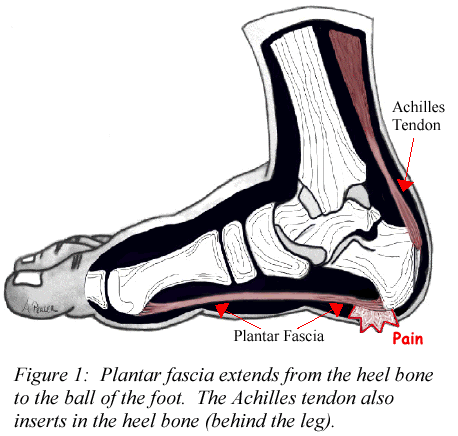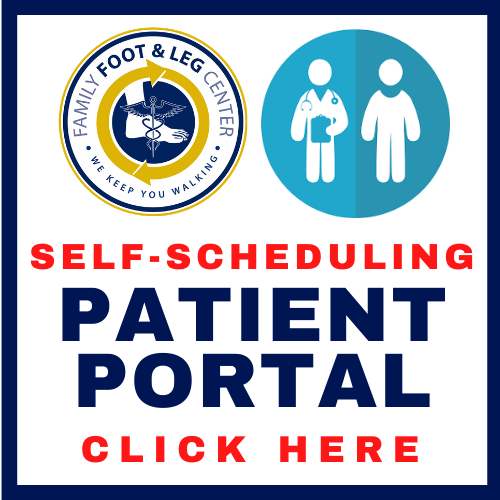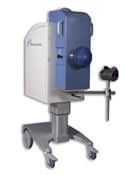How to Heal Your Heel Pain
A common foot complaint is pain in the bottom of the heel. This is often referred to as heel spurs or plantar fasciitis. It commonly is painful the first few steps in the morning or after rest. Heel pain tends to get worse the longer one stands during the day.
It is caused by subtle changes in foot structure that occurs over time. These changes result in the gradual flattening of the arch. As this occurs a thick ligament (the plantar fascia) that is attached to the bottom of the heel and fans out into the ball of the foot is stretched excessively. This ligament acts as a shock absorber while walking. As the foot flattens it stretches. If it stretches too much it gets inflamed and causes pain.
Over time the pull of the ligament creates a spur on the heel bone. It is important to realize that it is not the spur that causes the pain and therefore the spur does not need to be removed in most cases. This condition may also cause generalized arch pain called plantar fasciitis. This is an inflammation of the plantar fascial ligament.
A common factor that contributes to this condition is tightness of the calf muscles. Women who wear high heels and people who walk for exercise will often develop this problem because of the tightness that results in the calf muscle as a result of these activities. A non-supportive shoe also contributes to heel pain. Weight gain is another factor in developing heel pain.
A common foot complaint is pain in the bottom of the heel. This is often referred to as heel spurs or plantar fasciitis. It commonly is painful the first few steps in the morning or after rest. Heel pain tends to get worse the longer one stands during the day.
It is caused by subtle changes in foot structure that occurs over time. These changes result in the gradual flattening of the arch. As this occurs a thick ligament (the plantar fascia) that is attached to the bottom of the heel and fans out into the ball of the foot is stretched excessively. This ligament acts as a shock absorber while walking. As the foot flattens it stretches. If it stretches too much it gets inflamed and causes pain.
Over time the pull of the ligament creates a spur on the heel bone. It is important to realize that it is not the spur that causes the pain and therefore the spur does not need to be removed in most cases. This condition may also cause generalized arch pain called plantar fasciitis. This is an inflammation of the plantar fascial ligament.
A common factor that contributes to this condition is tightness of the calf muscles. Women who wear high heels and people who walk for exercise will often develop this problem because of the tightness that results in the calf muscle as a result of these activities. A non-supportive shoe also contributes to heel pain. Weight gain is another factor in developing heel pain.
Home Treatments for heel pain
Stretch, Stretch, Stretch and Stretch
Calf muscle stretching is very useful. The typical runners stretch by leaning into a wall is helpful. An alternative method of stretching is to stand approximately two feet from a wall. Facing the wall turn your feet inward so you are pigeon toed. Lean forward into the wall keeping your heels on the floor and the knees extended. Also keep your back straight and do not bend at the hips. Hold the stretch for 10 seconds and do the stretch ten times in a row. Do the stretching three times each day. Always stretch the calf muscles following any form of exercise.
Over the Counter Arch Supports
Wear a supportive sport or walking shoe. This can be supplemented with a good over the counter arch support, some of the time a custom set may be recommended.
Oral Anti-inflammatory Medications
Medications like Advil, Naprosyn or Aleve may be of some benefit. Always read the medications directions and warnings before use and seek the advice of a physician.
*********************************************
Professional Care
If the heel pain persists your foot doctor may suggest a cortisone injection, taping the foot to support the arch, night splints to stretch the calf muscles at night while you are sleeping or functional foot orthotics. Professional physical therapy program may also be required. The Family Foot and Leg Center has the only integrated foot and ankle physical therapy clinic in the area. We are very proud of our excellent , knowledgeable staff with over 28+ years of experience in physical therapy. On occasion surgery may be required to cure this condition.
Brought to you by the doctors of the Family Foot and Leg Center, P.A.
Stretch, Stretch, Stretch and Stretch
Calf muscle stretching is very useful. The typical runners stretch by leaning into a wall is helpful. An alternative method of stretching is to stand approximately two feet from a wall. Facing the wall turn your feet inward so you are pigeon toed. Lean forward into the wall keeping your heels on the floor and the knees extended. Also keep your back straight and do not bend at the hips. Hold the stretch for 10 seconds and do the stretch ten times in a row. Do the stretching three times each day. Always stretch the calf muscles following any form of exercise.
Over the Counter Arch Supports
Wear a supportive sport or walking shoe. This can be supplemented with a good over the counter arch support, some of the time a custom set may be recommended.
Oral Anti-inflammatory Medications
Medications like Advil, Naprosyn or Aleve may be of some benefit. Always read the medications directions and warnings before use and seek the advice of a physician.
*********************************************
Professional Care
If the heel pain persists your foot doctor may suggest a cortisone injection, taping the foot to support the arch, night splints to stretch the calf muscles at night while you are sleeping or functional foot orthotics. Professional physical therapy program may also be required. The Family Foot and Leg Center has the only integrated foot and ankle physical therapy clinic in the area. We are very proud of our excellent , knowledgeable staff with over 28+ years of experience in physical therapy. On occasion surgery may be required to cure this condition.
Brought to you by the doctors of the Family Foot and Leg Center, P.A.
Heel Pain Exercises
90 % of our patients will NOT require surgery for plantar fasciitis, and if it is required, we perform a minimally invasive procedure on site to alleviate heel pain in most cases.
What is ESWT?
ESWT or Extracorporeal Shock Wave Therapy, is a non-invasive, non-surgical treatment option for the intense, persistent heel pain associated with chronic plantar fasciitis and achilles tendonitis.
"Extracorporeal" means "outside the body". Shockwaves, also known as pressure or sound waves, are generated from a special ESWT device and focused onto the targeted tissue.
The shockwaves are delivered outside the body to trigger an individual's own repair mechanisms.
The concept behind shockwave therapy in orthopedic disorders is that the shockwave stimulates and reactivates healing to encourage revascularization and other elements necessary to advance normal tissue healing.
Additionally, shockwaves help to over-stimulate pain transmission
nerves, which can lead to a reduction in sensitivity and pain.
Please contact us for more information or to request for an appointment.
Call Today: (239) 430-3668 (FOOT)
Self Service # (239) 420-7170
Fax: (239) 692 9436


